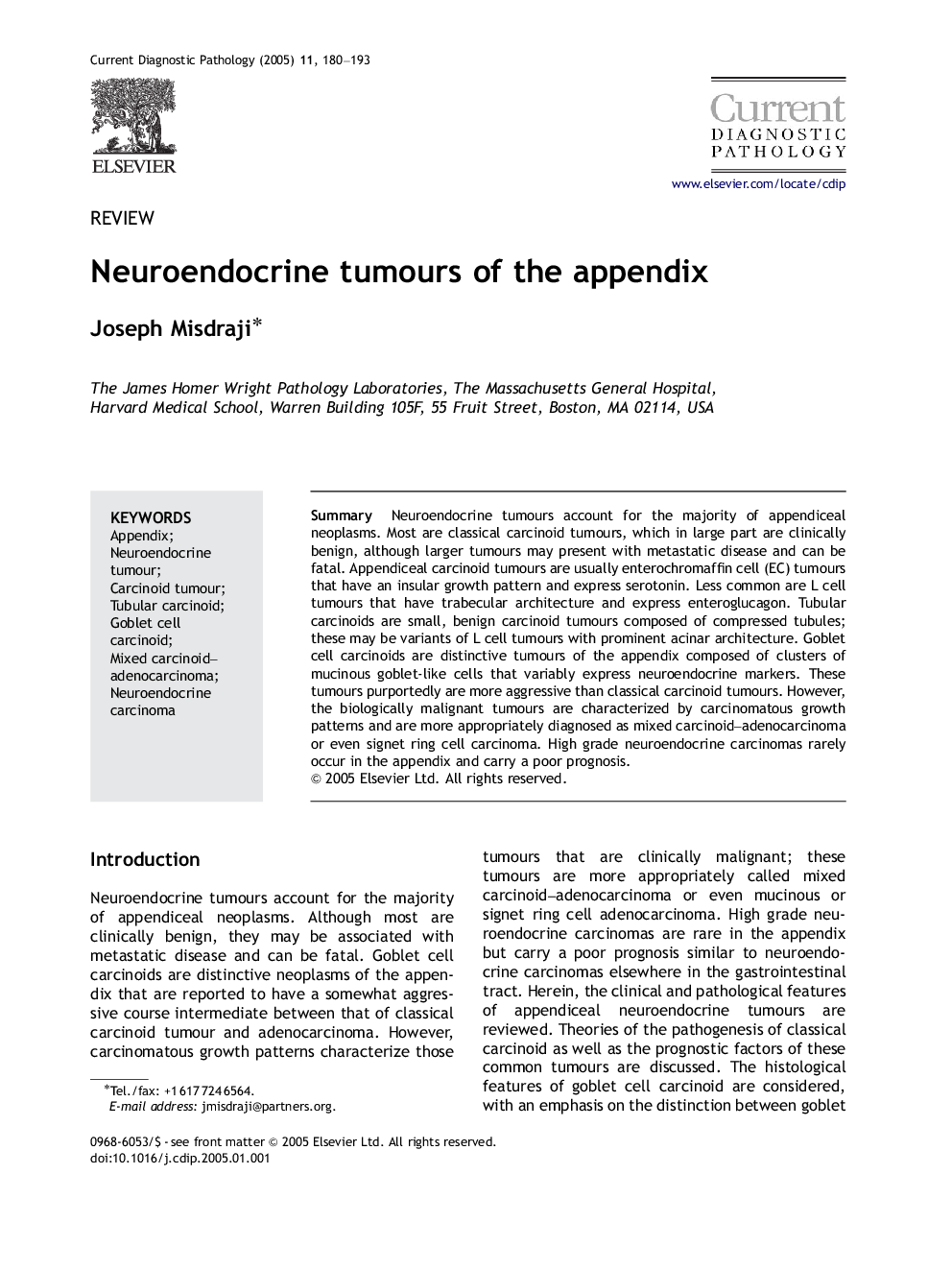| Article ID | Journal | Published Year | Pages | File Type |
|---|---|---|---|---|
| 9364974 | Current Diagnostic Pathology | 2005 | 14 Pages |
Abstract
Neuroendocrine tumours account for the majority of appendiceal neoplasms. Most are classical carcinoid tumours, which in large part are clinically benign, although larger tumours may present with metastatic disease and can be fatal. Appendiceal carcinoid tumours are usually enterochromaffin cell (EC) tumours that have an insular growth pattern and express serotonin. Less common are L cell tumours that have trabecular architecture and express enteroglucagon. Tubular carcinoids are small, benign carcinoid tumours composed of compressed tubules; these may be variants of L cell tumours with prominent acinar architecture. Goblet cell carcinoids are distinctive tumours of the appendix composed of clusters of mucinous goblet-like cells that variably express neuroendocrine markers. These tumours purportedly are more aggressive than classical carcinoid tumours. However, the biologically malignant tumours are characterized by carcinomatous growth patterns and are more appropriately diagnosed as mixed carcinoid-adenocarcinoma or even signet ring cell carcinoma. High grade neuroendocrine carcinomas rarely occur in the appendix and carry a poor prognosis.
Related Topics
Health Sciences
Medicine and Dentistry
Pathology and Medical Technology
Authors
Joseph Misdraji,
